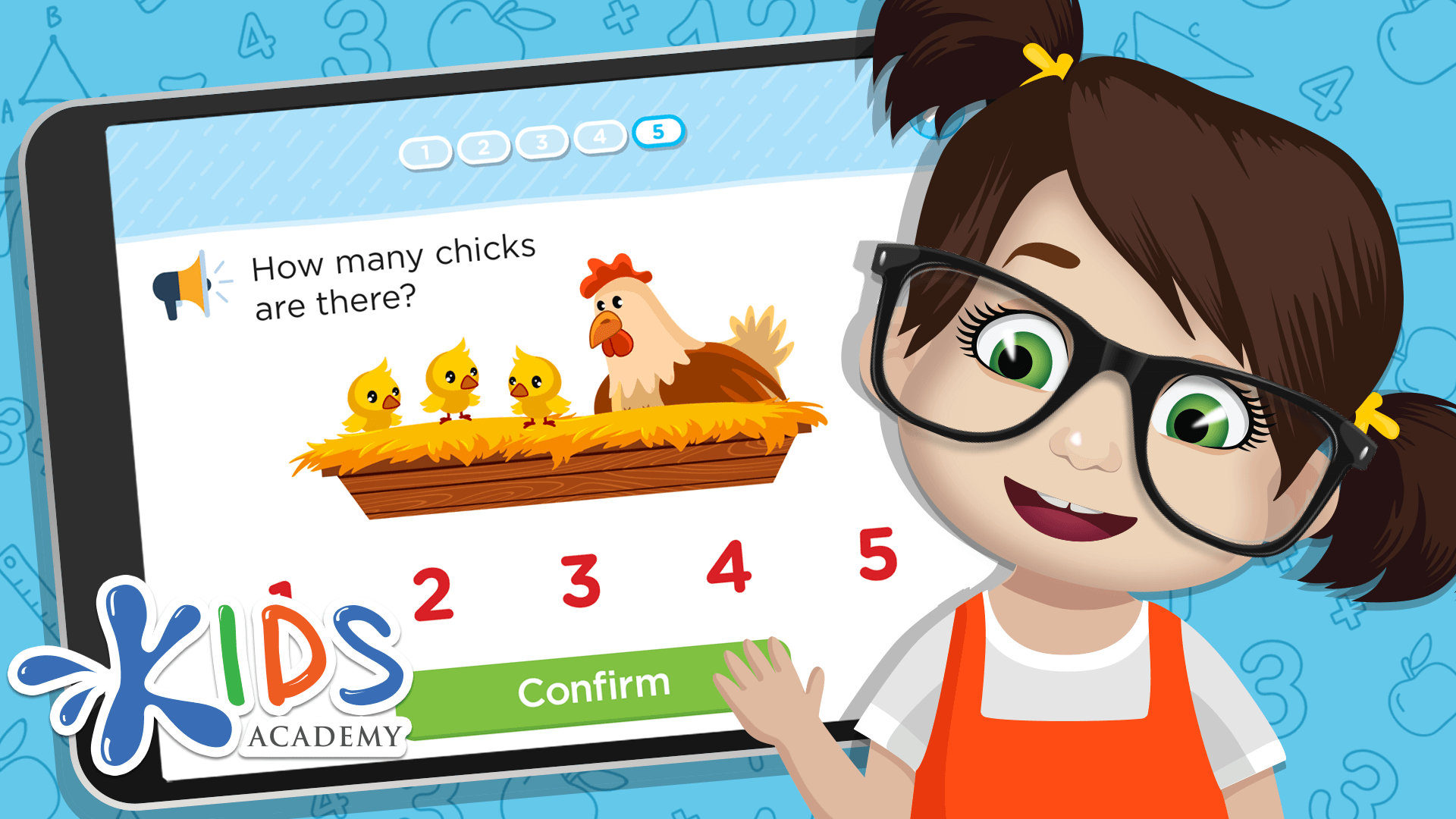Handwriting Matters—Teaching Kids to Write by Hand
March 15, 2024
In our increasingly digital world, it may seem as though the value of writing has diminished, especially when considering a rising need for students to learn to type. However, despite the proliferation of computers and mobile devices, the act of writing remains a critical skill that has a profound effect on a child’s cognitive development, including reading acquisition and fluency. This doesn’t mean that the benefits of technology can’t be harnessed to enhance a child’s writing skills; rather, young learners must practice the fine motor skills necessary for proper writing development.
Through scribbles and drawings, kids build the muscle tone needed in their hands to support a proper pencil grip later, as well as some hand-eye coordination.
Learning to write by hand begins from a very early age and requires hands-on practice to form appropriate hand-to-eye coordination and fine motor skills. Children need ample opportunity to use writing tools, such as thick crayons and markers to encourage the formation of a grasp needed to create lines and curves. Beyond this, it might be confusing as to how to begin teaching kids to write letters, numbers, words, and more.
Read on to find great free writng resources! ⇓
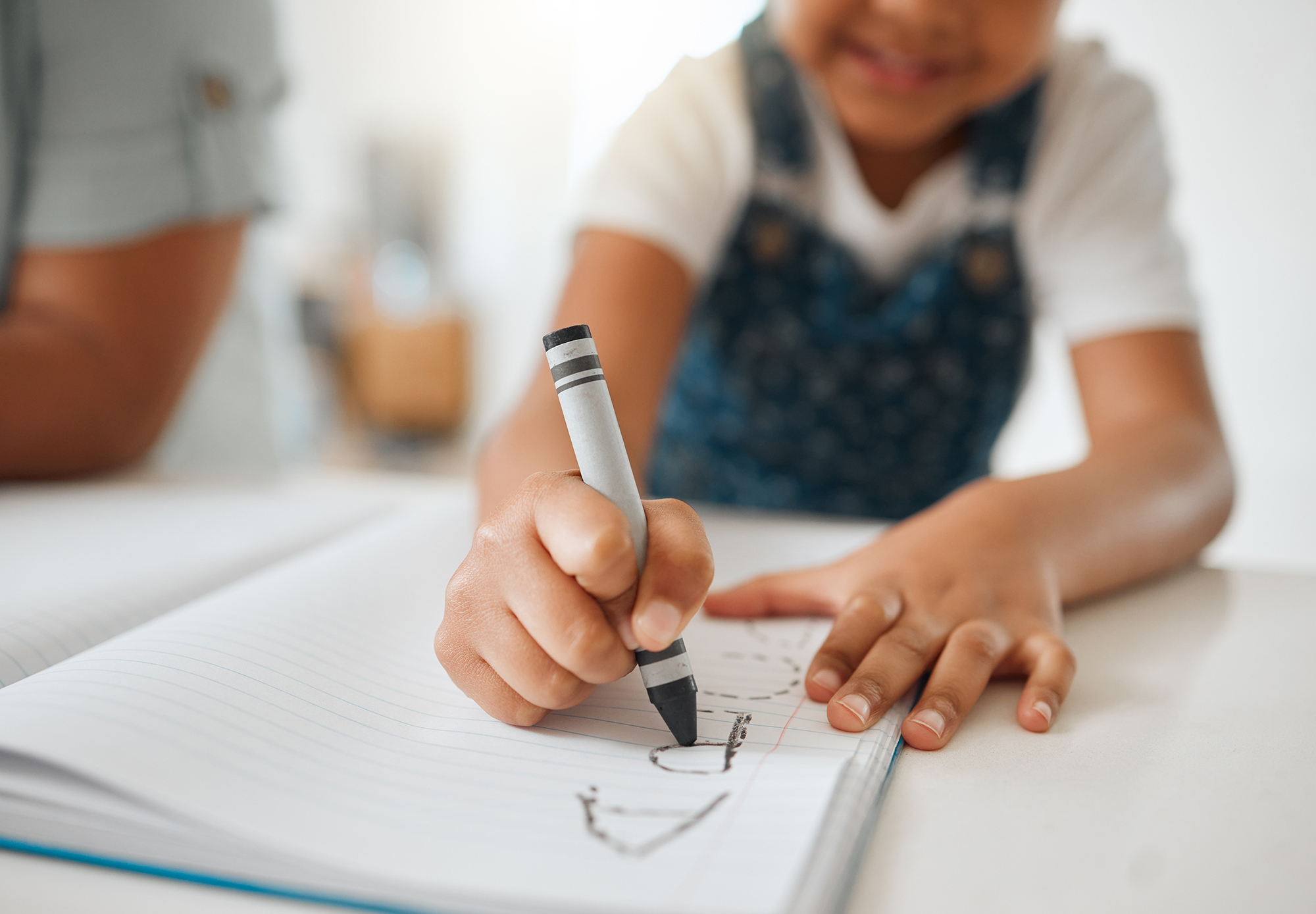
So, where do parents and teachers begin, and how could digital resources help develop crucial handwriting skills? The answer lies in the fact that toddlers form the foundation for future handwriting when they begin to create artwork by scribbling and drawing, and by embracing this early stage, writers will flourish and progress. As soon as they are putting pencil to paper, parents and teachers can turn to worksheets from Kids Academy to offer much-needed practice for learning to write by hand.
The Stages of Handwriting
Stage 1: Scribbling and Drawing
As children emerge from infancy, they begin to explore self-expression when they pick up a crayon or marker for the first time, and scribble on paper—or the wall! This is the very first stage of handwriting development as the youngest learners discover that they can record whatever they want using a writing tool. While this stage is messy and often inconvenient, it is a necessary one. Through scribbles and drawings, kids build the muscle tone needed in their hands to support a proper pencil grip later, as well as some hand-eye coordination.
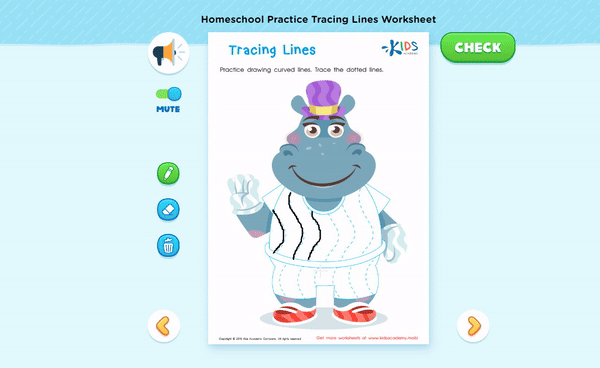
Soon, kids develop the ability to differentiate between the types of scribbles they can create. This is when teachers and parents can step in to assist a child’s learning by utilizing specific worksheets to offer targeted practice. All they need at this stage is ample practice with different types of lines and how to make them. Our collection of tracing lines and curves is specifically designed to give preschoolers the practice they need, especially when it comes to tricky curved lines, which are often more difficult for them to draw.
Our worksheets can be printed so that learners can practice proper pencil grip, or they can be completed online with a single finger using a touchscreen. Either printed or online, children use their hands and fingers to trace the dotted lines to practice drawing straight and curved lines.
Stage 2: Forming Letters and Shapes
Once kids have experimented with different types of lines, they are ready to begin the next stage, which involves recognizing that writers draw symbols to convey letter sounds and meaning. This will allow learners to practice the motor skills they have already learned to create both upper and lowercase letters. As preschoolers learn the letters and their sounds, they should also practice writing them using correct pencil strokes to form each letter. This selection of alphabet tracing worksheets directs learners on which way to draw each line:
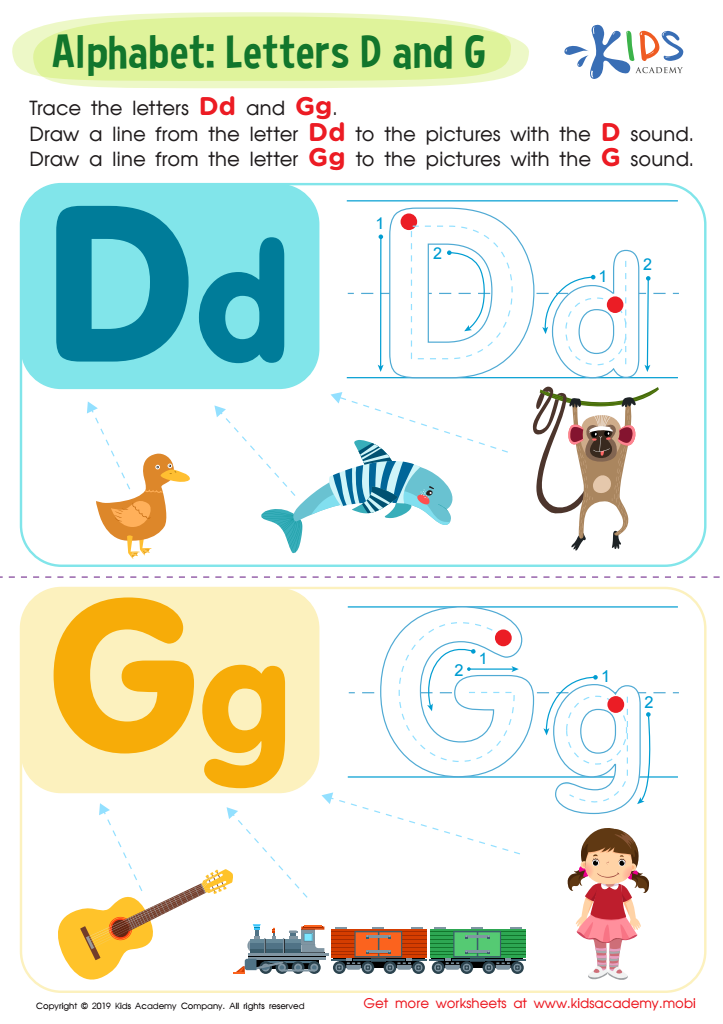
Not only do the worksheets use arrows and numbers to indicate pencil strokes, but they cover both upper and lowercase letters, and integrate letter sounds into the activity to allow children both reading and writing practice as both skills are so interrelated. This is why learning to write by hand improves reading acquisition and fluency, as the act of learning to write involves knowing and recognizing letters and their sounds.
Stage 3: Words and Spaces
As they learn to recognize, write, and trace letters, kids move on to tackle words and spaces. Tracing words usually involves learning to read and recognize easy one-syllable sight words so that children cover both reading and writing all at once. This collection of word-tracing worksheets offers exciting activities that motivate growing learners to practice writing words.
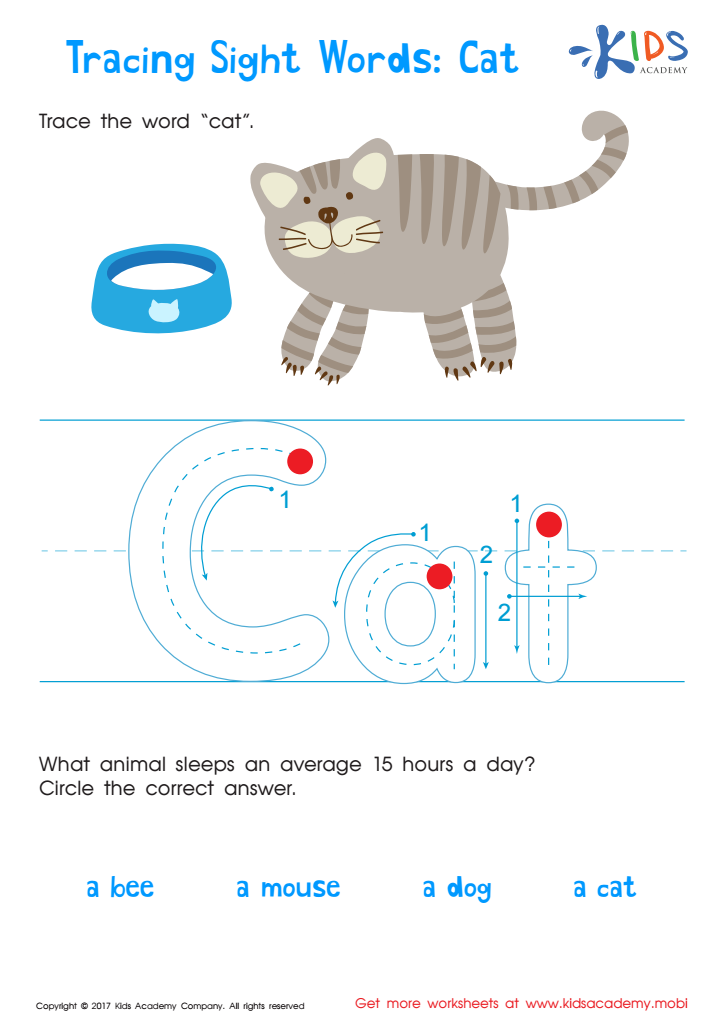
As you can see, the worksheets pictured above all feature simple words that are well-known to most kids. Because they are paired with cute graphics, they can easily form associations between the word and the pictures which reinforces them as sight words while gaining priceless practice tracing letters using proper pencil strokes.
Stage 4: Writing Sentences and Using Conventional Writing Techniques
Finally, the last stage of learning to write by hand includes more sophisticated skills that build from what was already learned. After children have learned to write sentences using punctuation, they are often ready to begin learning to write cursive letters by the second or third grade. Unfortunately, some schools have stopped teaching students to write in cursive, but our collection of cursive alphabet sheets has you covered!
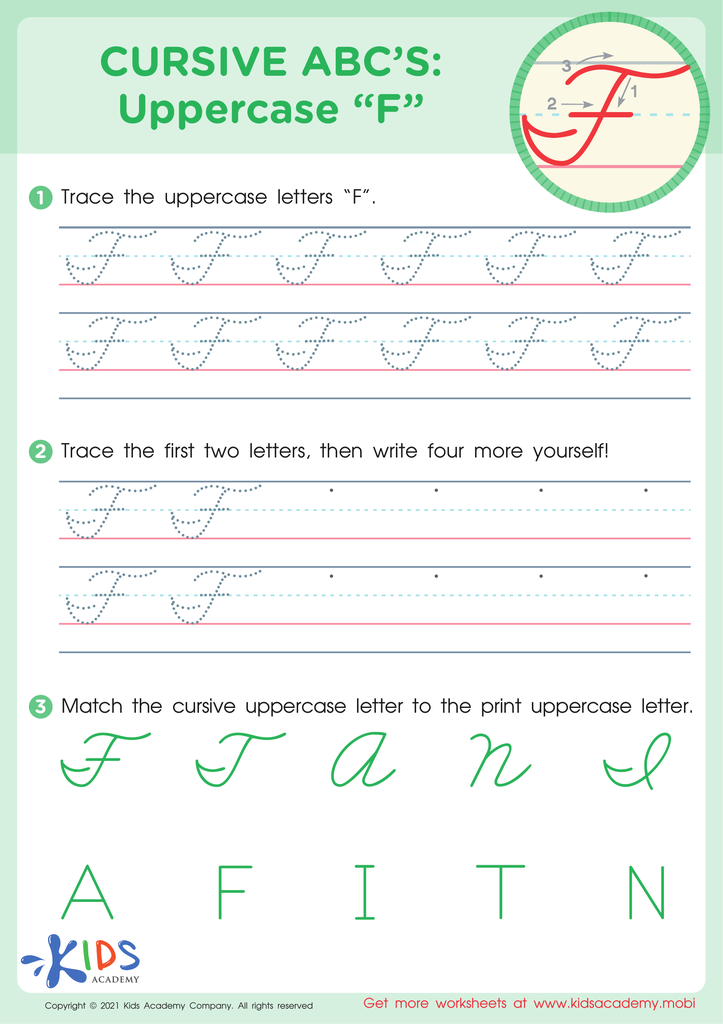
Cursive can be difficult to write, and even more challenging to read, so the worksheets above help students to learn how to do both. While working, they also practice proper size and spacing of letters to perfect their cursive to make it as neat as possible, which encourages careful penmanship.
Teaching children to write may seem like a difficult endeavor, especially when typing may seem like an easier option. However, writing by hand is critically important to develop a plethora of crucial cognitive skills necessary for successful learning. Digital resources, like the worksheets offered by Kids Academy offer teachers and parents the best materials available so kids get the practice they need. Check out our entire library of tracing and writing worksheets at kidsacademy.mobi to find exactly what your child needs to enhance their learning.


%20(1).jpg)




